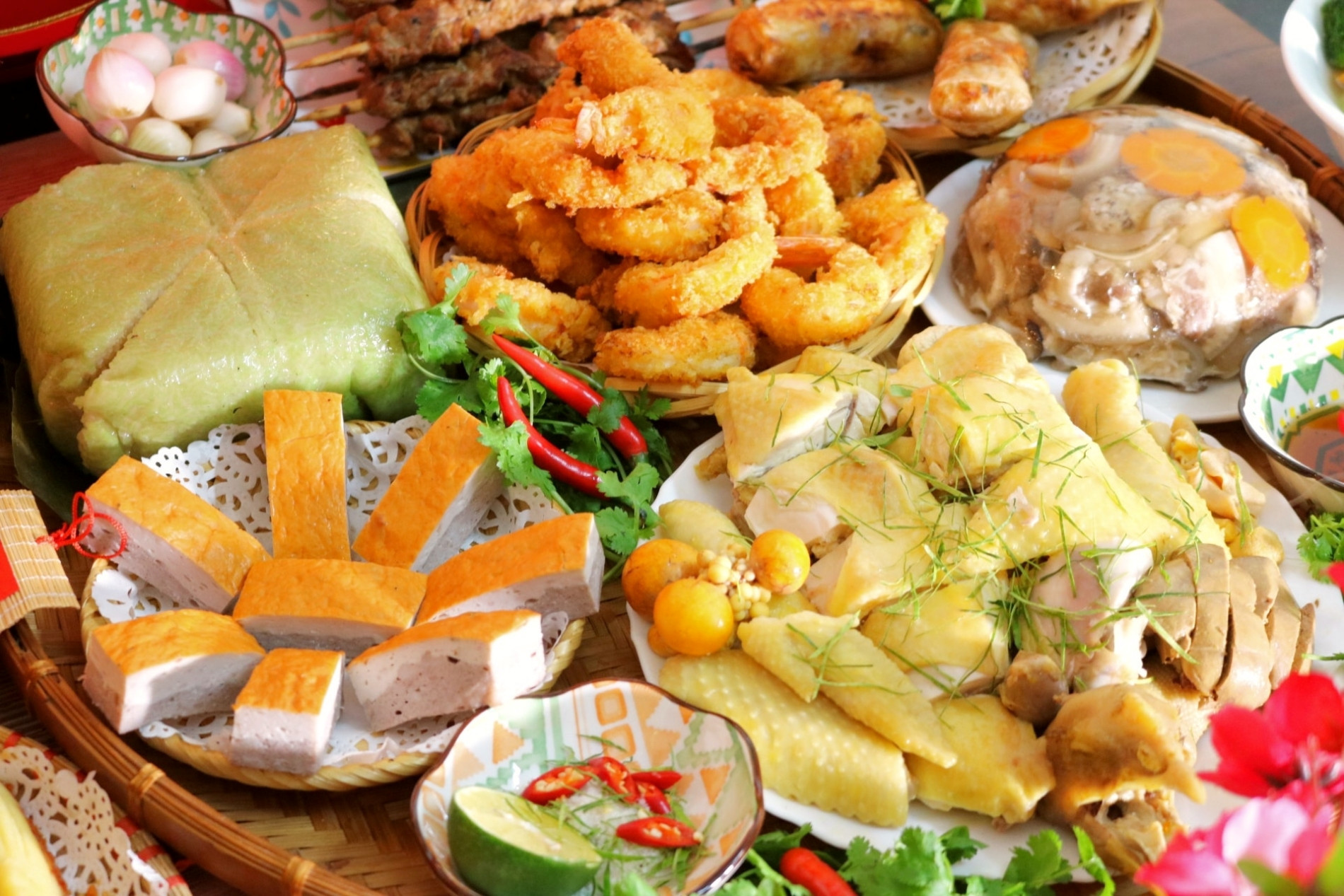The Tet feast in northern Vietnam is known for its meticulous presentation, vibrant colors, and rich flavors. Each dish is thoughtfully prepared to represent the essence of Tet and the wishes for a prosperous new year.
Tet 2025 marks an opportunity for families to gather, enjoy the warmth of togetherness, and indulge in a beautifully arranged traditional feast. While Tet feasts vary across Vietnam’s regions, the northern Tet table reflects the unique cultural and culinary traditions of the area.
A well-rounded feast with symbolic meaning

According to culinary artisan Pham Thi Anh Tuyet from Hanoi, the northern Tet feast emphasizes the balance of flavors and colors, representing the four seasons and four directions.
The feast is traditionally arranged with at least four bowls and four plates, symbolizing stability and harmony. Wealthier families might expand the feast to include six, eight, or even more bowls and plates for added abundance and festivity.
The four bowls typically include: Pork leg soup with bamboo shoots; Mixed vegetable soup; Vermicelli soup; Pork and mushroom soup
Some families also prepare additional bowls, such as slow-cooked kohlrabi, whole-stuffed pigeon soup, or stewed chicken. Wealthier households in the past might even include luxurious dishes like abalone or shark fin soup.
The four plates commonly feature: Boiled chicken; Sliced pork; Pork sausage; Cinnamon pork rolls
Other plates might include jellied meat (a winter specialty), pork head terrine, stir-fried almond flakes, caramelized fish with galangal, and refreshing salads made with kohlrabi or water celery. Spring rolls are often included as a crispy and flavorful favorite.
Desserts complete the feast with a selection of sweets such as candied lotus seeds, kumquat preserves, ginger candy, and sticky mung bean pudding, served in small bowls or plates to create a harmonious and diverse presentation.
Dishes steeped in tradition and meaning

The dishes on a northern Tet feast are more than just culinary delights; they carry deep symbolic meanings that reflect the wishes of the family for the new year.
Banh chung (square sticky rice cake) is a Tet centerpiece, filled with mung beans and pork, wrapped in green dong leaves, and tied with bamboo strings. Its square shape symbolizes the earth and Vietnam’s agricultural heritage.
Jellied meat is a quintessential winter dish of northern Vietnam. Its transparent appearance symbolizes purity and the hope for a fresh start in the new year.
Boiled chicken is a staple that represents the wish for favorable weather and a smooth year ahead.
Red gac sticky rice brings vibrant color to the table, symbolizing good luck and joy for the coming year.
Pork sausage and pork head terrine are essential for their taste and cultural significance. Pork sausage is made from finely ground pork to retain its natural sweetness, while pork head terrine uses the head’s lean and gelatinous parts to create a rich, flavorful dish.
Mixed vegetable soup is another hallmark of Tet in northern Vietnam. Made by simmering vegetables with fish maw, this soup is both nutritious and visually appealing.
Finally, spring rolls, with their crispy golden crust and flavorful filling of pork and vegetables, symbolize warmth and prosperity.
While Tet cuisine has become more diverse and innovative over time, many families continue to honor the traditional feast, preserving cultural values and expressing their hopes through these cherished dishes.
Ngoc Lai